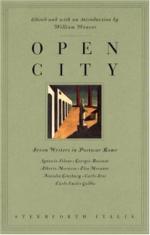|
This section contains 7,557 words (approx. 26 pages at 300 words per page) |

|
SOURCE: Raffa, Guy P. “Carlo Levi's Sacred Art of Healing.” Annali d'Italianistica 15 (1997): 203-20.
In the following essay, Raffa explores Levi's anthropological vision in light of the theories of Victor Turner and René Girard.
Written in 19351, the year of Carlo Levi's exile in Lucania, Charlotte Gower Chapman's Milocca: A Sicilian Village is an anthropological study of a Sicilian village based on the author's fieldwork in 1928-29.2 Modeled on Robert Redfield's Tepoztlan, a Mexican Village (1930), Chapman's Milocca is the “only full-scale Italian village study in existence which was carried out before World War II” (Cronin 18). While Levi's Cristo si è fermato a Eboli (1945), despite its resistance to generic classification, was unquestionably the product of—among other things—its author's literary-artistic imagination, it also inaugurated a new direction in Italian anthropological research along the lines of Chapman's study as the nation sought to rediscover itself after the years of Fascism and the...
|
This section contains 7,557 words (approx. 26 pages at 300 words per page) |

|


